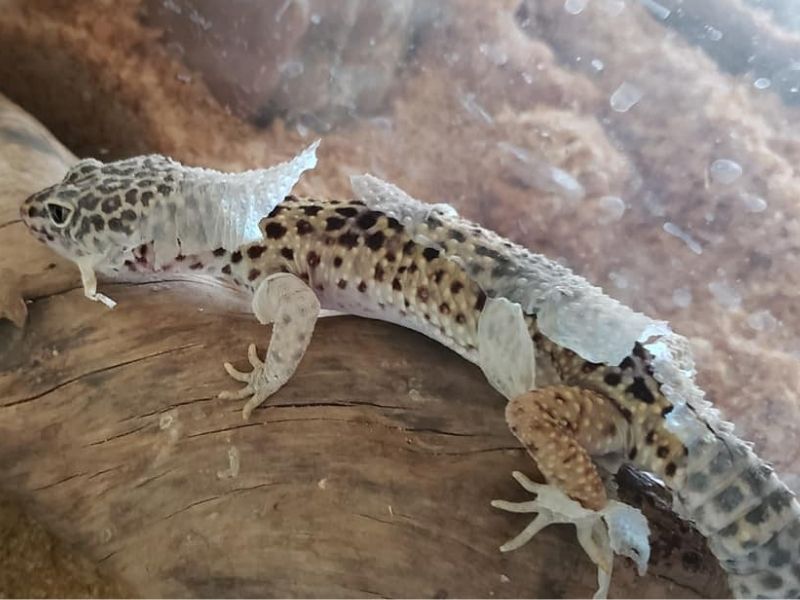How handle leopard gecko during shedding skin ? Leopard geckos are nocturnal, calm, and simple to tame ground-dwelling geckos. They make excellent pets since they are easy to care for and fascinating to observe. Leopard geckos, which come in various colors, are fascinating to look at and shed often.
Gecko owners may find that shedding season is both fascinating and upsetting at the same time, especially if things don’t go according to plan. Geckos shed their skin in predictable periods, and there are several things you can do to assist in the process.
Table of Contents
Leopard Gecko Shedding Help and Fixing Shedding Issues
Is your Leopard Gecko suffering from shedding issues? Any extra skin around its toenails, eyes, and mouth have been noted. That’s okay; we’re happy to assist!
Bathing your Leopard gecko in warm, shallow water, putting it in a container with warm, moist paper towels, gently massaging the extra skin with a damp Q-tip or cotton ball, or applying shedding assistance items are all ways you may help it lose its skin.
- 3 Pack Of Zoo Med Reptile Shed Aid, 2.25 oz
Last update on 2022-07-08 / Affiliate links / Images from Amazon Product Advertising API
What Is the Frequency of Shedding?
The age and lifestyle of your leopard gecko will determine how frequently it sheds. Leopard geckos shed more often while they are young and juvenile than they do when they are adults. One of the reasons for this is that juvenile leopard geckos develop more quickly than adults, who do not have to grow.
Because adult leopard geckos do not shed as a means of growth, they will lose their skin to heal any damage, even tiny scratches and wounds, as they get older. Don’t be alarmed if you observe that your leopard gecko is shedding excessively or insufficiently. As long as your leopard gecko is behaving normally, you may be sure that it is in good health.
Shedding Problems in Leopard Geckos
Leopard geckos can typically shed their skin without difficulty in the environment, although this is not always the case in captivity. Why? Leopard geckos in captivity have shedding issues primarily because of low humidity and hydration. Heat, humidity, and water are necessary for leopard geckos to shed properly.
Dry and semi-desert areas of Afghanistan, Iran, Iraq, and northwest India are their natural habitats, and these conditions are ideal for their shedding requirements. As a result, they can shed with little effort in the wild. On the other hand, Leopard geckos might suffer from shedding issues if their captivity does not replicate their native hot and humid habitat.
During The Shedding Period, Should I Feed My Leopard Gecko?
Geckos eat every 2-4 days on average, and they may get themselves ready for shedding before they even eat. It is usual for the species to consume less or not at all during the shedding process since they don’t require it. Remove all food from his cage. His delicate skin might be irritated by live foods, while other foods can grow worse and begin to smell, or they can overwhelm and overwhelm your Leopard.
In the case of leopard geckos, shedding occurs when they outgrow their skins. No of how frequently it happens, this monthly cycle might become troublesome in an improper set-up terrarium. Offer a surface to brush against and maintain adequate moisture and humidity levels.
If all else fails, try a sauna or even a bath for your gecko to promote the optimal circumstances for shedding. Not to mention, your Leopard won’t mind munching on a little of lost skin. This is quite normal, even though it’s somewhat nasty.
I hope now you have got all the related to handle leopard gecko during shedding skin in 2022?

